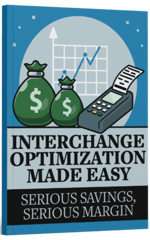In the complex world of payment processing, Independent Sales Organizations (ISOs) play a crucial role in bridging merchants with financial institutions. One aspect that stands at the core of their operations is interchange plus pricing—a term that, while common, remains shrouded in layers of complexity. This article aims to demystify interchange padding within the framework of interchange plus pricing, offering ISOs a deeper understanding and actionable insights to navigate this landscape effectively.
Want to compare payment processing pricing models? Learn how tiered, flat rate, interchange plus, surcharging, and more impact costs in our complete guide.
Interchange plus pricing, at its essence, is a straightforward concept. It adds a markup to the base cost (interchange fees) that banks charge for card transactions. This pricing model promises transparency, allowing merchants to see exactly what they're paying for. But to leverage its benefits fully, ISOs must grasp not just the basics of interchange fees but also how padding these fees can impact their profitability and relationship with merchants.
The Basics of Interchange Fees
Interchange fees are the foundation upon which the card payment ecosystem stands. They are fees paid between banks for the acceptance of card-based transactions. For ISOs and merchants alike, understanding these fees is the first step in deciphering the cost of payment processing services.
Imagine owning a retail store where you sell hats at various price points, from clearance items to premium branded caps. To ensure a profit, you mark up these prices by a fixed percentage. This analogy parallels interchange plus pricing, where the "cost" of each transaction (like the wholesale cost of a hat) is marked up to ensure the payment processor earns a profit. This model promotes transparency but introduces complexity in pricing and statement understanding.
Benefits of Interchange Plus Pricing
For ISOs, the primary benefit of this model is transparency. It allows them to demonstrate to merchants exactly what part of the fees are the processor's markup versus the interchange costs. This can help in building trust and simplifying discussions about fees.
Drawbacks of Interchange Plus Pricing
However, this transparency comes with a cost—complexity. Merchants may find statements confusing, with varied costs for different transactions. This complexity necessitates a deep understanding and ability to explain the nuances to merchants effectively.
Ideal Candidates for Interchange Plus Pricing
Typically, interchange plus pricing suits merchants processing over $100,000 a month. These high-volume businesses benefit from understanding their costs in detail, which in turn helps in negotiating better rates and services.
Navigating Interchange Tables on Statements
Interchange tables list various transaction costs, making statement analysis a daunting task. This is where understanding interchange padding becomes crucial. Padding refers to the practice of adding extra fees or margins on top of the interchange rates, affecting the overall cost for merchants.
Interchange Padding Explained
Interchange padding can significantly impact a merchant's cost, sometimes without clear benefit or understanding. For ISOs, it's essential to balance profitability with fairness, ensuring that any added fees are justified and transparent.
The Importance of Clear Markup Strategies
Clear, fair markup strategies are vital. They ensure merchants feel valued and not exploited. Communicating the rationale behind fees can help maintain positive relationships and trust between ISOs and merchants.
Tools for Managing Interchange Plus Statements
Specialized software can simplify the analysis of interchange plus statements, breaking down fees and presenting them in an understandable format. These tools are invaluable for ISOs looking to save time and provide better service to their merchants.
For ISOs, mastering interchange plus pricing and understanding the implications of interchange padding are not just beneficial; they're essential. By embracing transparency, leveraging the right tools, and maintaining fair pricing practices, ISOs can build stronger relationships with merchants, ensuring mutual growth and success.





Comments